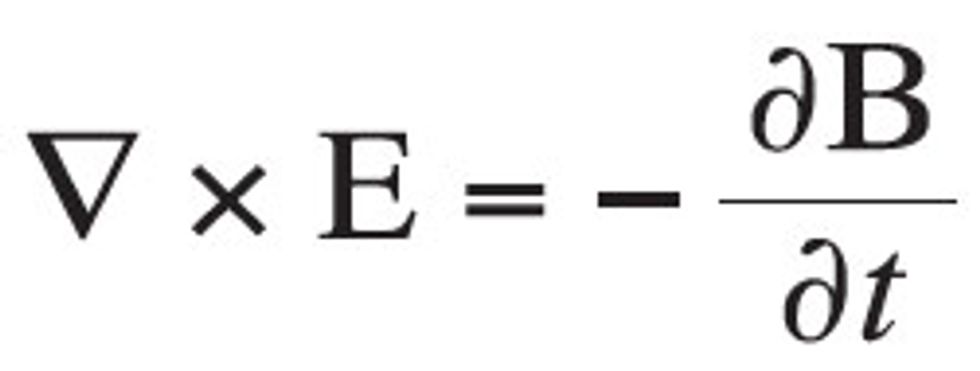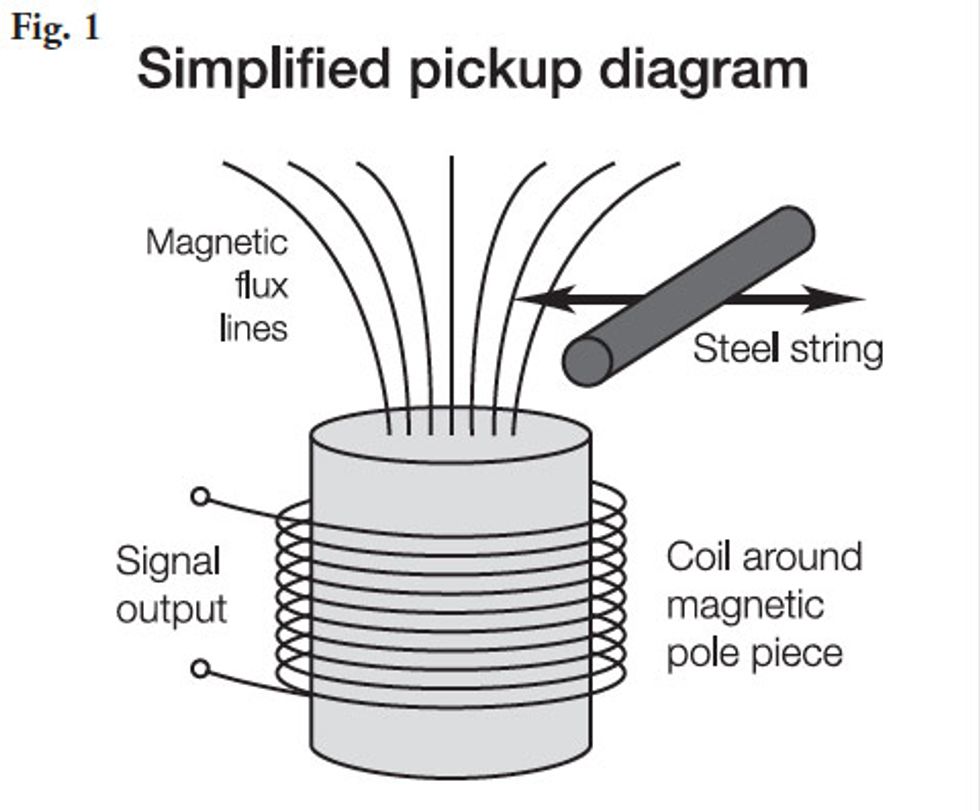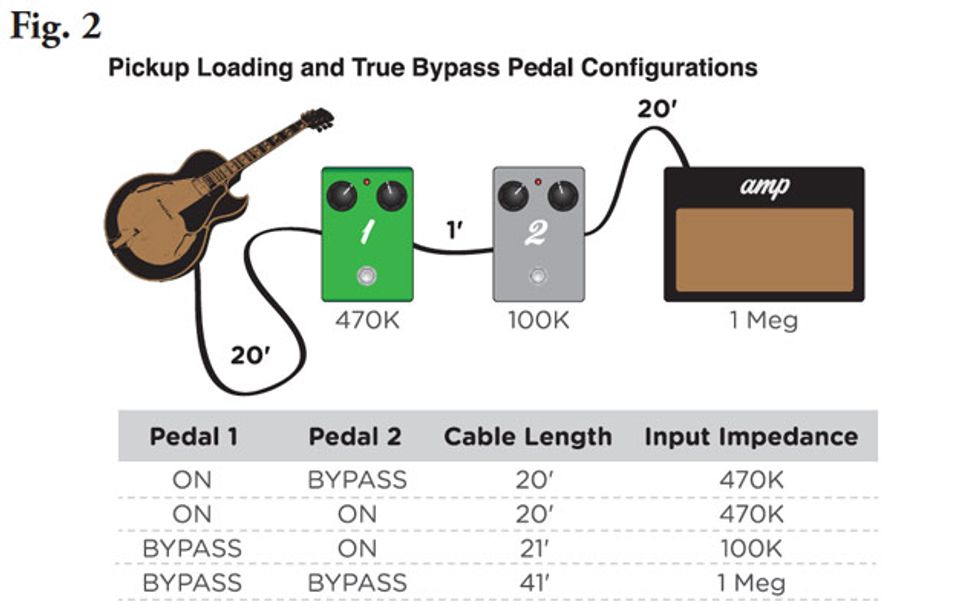In 1830, Michael Faraday submitted his most famous piece of scientific legislation‚ and this bit of genius described the physics that allows guitar pickups to exist. After ratification, it became formally known as the Faraday-Maxwell equation, and it’s part of the four coolest of Maxwell’s Equations. Here it is (don’t worry, there won’t be a test):
The basic idea is that if you have a loop of wire, and you can get a magnetic field inside the loop to change, the changing magnetic field will create a changing voltage across the ends of the wire. In a guitar pickup, a permanent magnet creates a static field that is modulated (changed) by the movement of a steel string. The steel part is important: The string has to be magnetic to disturb the field created by the magnet. That’s why you don’t see traditional pickups for nylon-string guitars. You may have also noticed that pickups (or at least the single-coil variety) provide equal opportunity to stray magnetic fields from transformers, fluorescent lights, and such.
In the case of a typical guitar pickup, a single loop of wire will only provide a very tiny voltage but, as shown below, we can keep wrapping more turns around the magnet to increase the signal level. (See Fig. 1)
A typical pickup has thousands of turns of very thin, insulated wire. Increasing the number of turns allows us to get a larger signal for our amplifier to work with, but as with everything, there can be too much of a good thing. As the turns pile on layer after layer, it becomes like placing a capacitor in parallel with the pickup. You will hear people talk about vintage handwound pickups and how they differ from the modern machine-wound counterparts. One difference is that the machine is able to lay down more even layers, while handwound pickups tend to be more “scramble wound.” The two different methods will have a different capacitance. Winding capacitance also explains why low-output pickups are typically brighter than the high-output variety.
In addition to the winding capacitance, the loops of wire create an inductor, and the resistance of the wire creates (you guessed it) a resistor. So, our little pickup is a resonant RLC circuit “all by itself.” Resonant circuits have a center frequency and Q associated with them. In general, low-output pickups will have a high Q at a high frequency, and as you move to high-output pickups, the Q and center frequency both are reduced. In the middle of the output range is where you get different midrange “honk.” The honk occurs when the Q is still high, but the frequency is reduced to the midrange band.
So what does all this mean to our quest for tone? Every signal source has something called output impedance. Sources with a low output impedance don’t really care what you hang on the output. But a pickup has a high output impedance and thus is sensitive to loading by pots, cables, and input stages. This means if we want to hear exactly what our pickup sounds like, we would need to take the volume and tone controls out of our guitar and place a high-input impedance buffer (10 Meg or more) a few inches away from the pickup. Chances are you wouldn’t like the unmolested sound of the pickup because we’re accustomed to hearing the effect of all the stuff hanging on the output. You probably want a little bit of “tone suck,” whether you know it or not.
One thing to keep in mind is that once our signal path hits a buffer, all of the cables and input stages from that point on don’t interact with our pickup. This is the source of a lot of confusion and attribution of magic to certain combinations of guitars, cables, pedals, and amps. The permutations and resulting confusion escalates when you throw in true bypass pedals. Assuming that your signal is unbuffered, true bypass removes the pedal from the signal path but exposes your pickup to more cables and a different input stage. See Fig. 2.
Everything we connect to our guitar alters the tone—sometimes for better and sometimes for worse. The better and worse may flip-flop for different guitars or even different pickup combinations on the same guitar. This is why you will get more consistent results by connecting your guitar to a buffer as the first pedal or by putting all of your effects in the effect loop of an amp. But consistent isn’t necessarily better— you may miss that magic combination. Don’t be afraid to experiment, as there are only a few things you can do that will actually damage your gear. And there are no wrong answers.
 Gregg Stock is
Senior Analog Guru and
Engineer at Strymon.
Gregg Stock is
Senior Analog Guru and
Engineer at Strymon.















![Rig Rundown: Russian Circles’ Mike Sullivan [2025]](https://www.premierguitar.com/media-library/youtube.jpg?id=62303631&width=1245&height=700&quality=70&coordinates=0%2C0%2C0%2C0)











